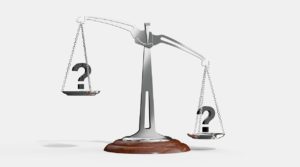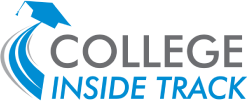The Limited Utility of US News & World Report for College List Building
By Jay Benanav
Let’s Talk College Rankings: The Limited Utility of US News & World Report

Every year, U.S. News & World Report releases its highly anticipated college ranking list, which is considered by many as the gold standard for evaluating higher education institutions. While these rankings offer some valuable insights, they have serious limitations.
Limited Criteria: One of the most significant drawbacks of the U.S. News college rankings is the limited set of criteria used to evaluate institutions. The rankings primarily rely on factors such as peer assessment. This narrow focus neglects many essential aspects of the college experience, such as the quality of teaching, research opportunities, campus culture, and career services.
 Overemphasis on Reputation: U.S. News heavily relies on peer assessments from college administrators and high school counselors. While reputation can be an important factor, it can also be subjective and easily influenced by media coverage and institutional marketing efforts. This overemphasis on reputation may not accurately reflect the actual quality of education an institution offers.
Overemphasis on Reputation: U.S. News heavily relies on peer assessments from college administrators and high school counselors. While reputation can be an important factor, it can also be subjective and easily influenced by media coverage and institutional marketing efforts. This overemphasis on reputation may not accurately reflect the actual quality of education an institution offers.
Encouraging Unhealthy Competition: Colleges often use questionable practices to improve rankings, such as manipulating data or gaming the system. This can divert resources away from genuine educational improvements and lead to a focus on factors that boost rankings rather than benefiting students. Incorrect and manipulated data submissions, such as those involving Columbia University, University of Southern California’s School of Education, Emory, Claremont-McKenna, and Temple, have undermined trust in the rankings’’ accuracy.
Stress on Students: High-ranking colleges often come with competitive admission processes, leading to increased stress and anxiety among applicants. Many students feel immense pressure to gain admission to a top-ranked institution, which can negatively impact their mental health and well-being.
 Discouraging Unique Educational Paths: The rankings can discourage students from pursuing unconventional or niche educational paths. Lesser-known colleges and institutions specializing in specific fields may be overlooked in favor of highly-ranked universities, limiting opportunities for students to explore their unique interests.
Discouraging Unique Educational Paths: The rankings can discourage students from pursuing unconventional or niche educational paths. Lesser-known colleges and institutions specializing in specific fields may be overlooked in favor of highly-ranked universities, limiting opportunities for students to explore their unique interests.
Lack of Personalization: U.S. News rankings provide a one-size-fits-all approach to college evaluation. It does not consider a student’s goals, preferences, or intended major. What may be the “best” college for one student may be the right school for another student.
Influence on Educational Practices: Colleges and universities may make decisions based on their desire to improve their rankings rather than what is best for their students. This can lead to decisions prioritizing factors like test scores and selectivity over more meaningful educational experiences.
Conclusion: While U.S. News college ranking lists can provide some insights into higher education institutions, it’s essential to approach them with a critical eye. These rankings have significant limitations, including a narrow set of criteria, an overemphasis on reputation, and the encouragement of unhealthy competition. Ultimately, the quality of one’s college experience depends on various factors, including individual goals, interests, and needs, which a single ranking system cannot accurately capture.
